IT WAS ALL BASALT!
Lucy Whitlam
Starting my freshman year at Bates College, I was excited to take my first field-based geology class. I had only dipped my toes into the earth science world in high school, and I was eager to explore Maine and all of its natural wonders. My geology class was centered around weekend field trips, and our first was to Ripogenus Gorge, a canyon in Northeast Piscataquis, Maine, with large rock outcrops and a dam at the upstream edge. Going into this field trip, I was nervous, overtired from a week of orientation, and apprehensive about camping with a group of strangers for three days. The 33 class members, including the professor and three TAs, piled into the vans for the three-and-a-half-hour drive.
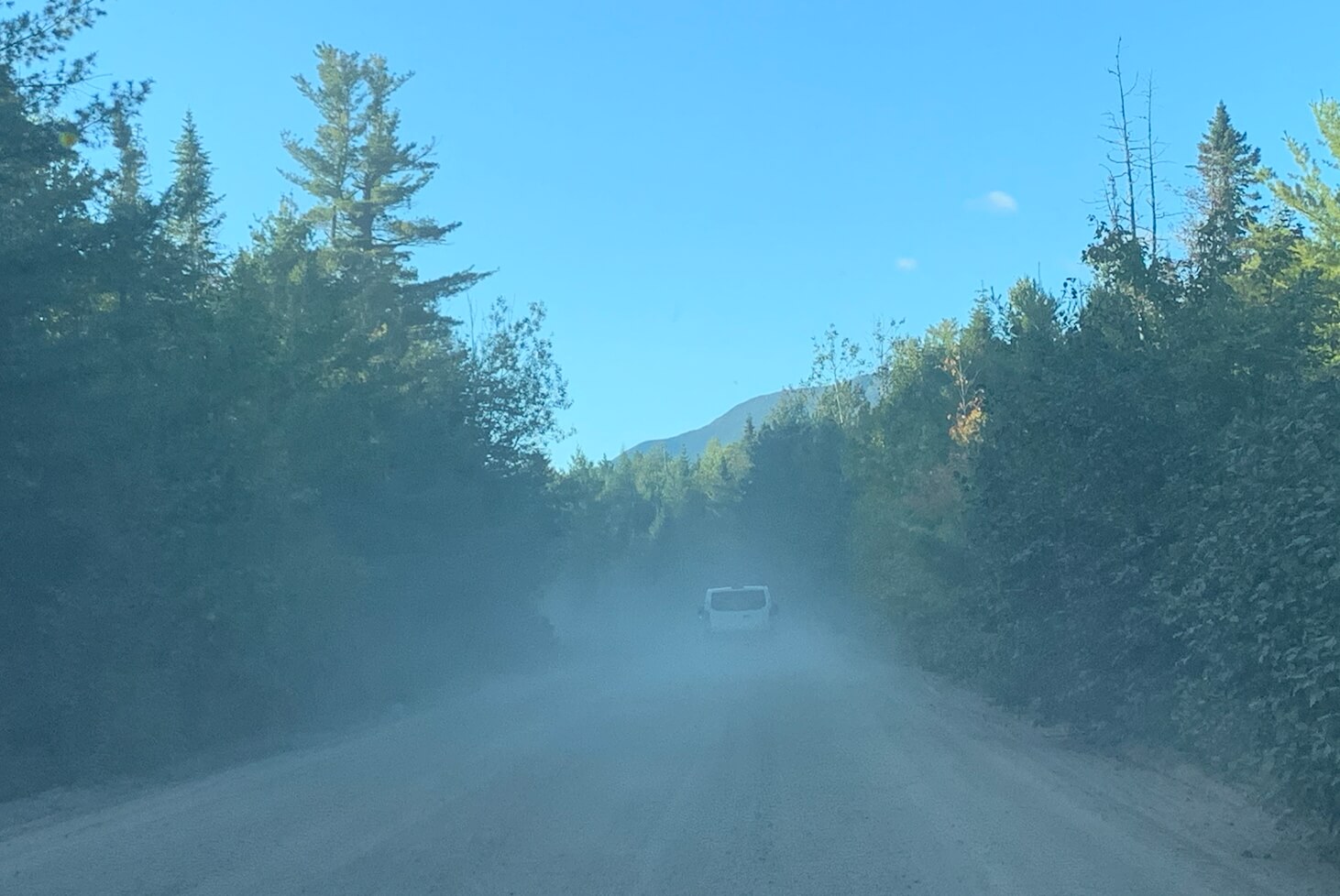
After a very bumpy ride along “The Golden Road,” a logging road with seemingly infinite pot-holes and a perpetual cloud of dust, we arrived at our campsite and began to set up our tents. The rest of the night consisted of cooking dinner, a campfire, and some of the most spectacular stargazing I have ever experienced.
After some not-very-restful sleep in my overcrowded tent, I was roused by the TAs shaking the tents and telling us to get up and help make breakfast. All of the students groggily moved through the morning and then piled in the vans yet again to drive to the Gorge. Once we arrived, our professor instructed us that we had 3 hours to find as many different rock types as we could, using our rock hammers and the skills that we had learned in class the week before. However, we had to stick to the bedrock, meaning no loose boulders or anything that wasn’t part of the ground.
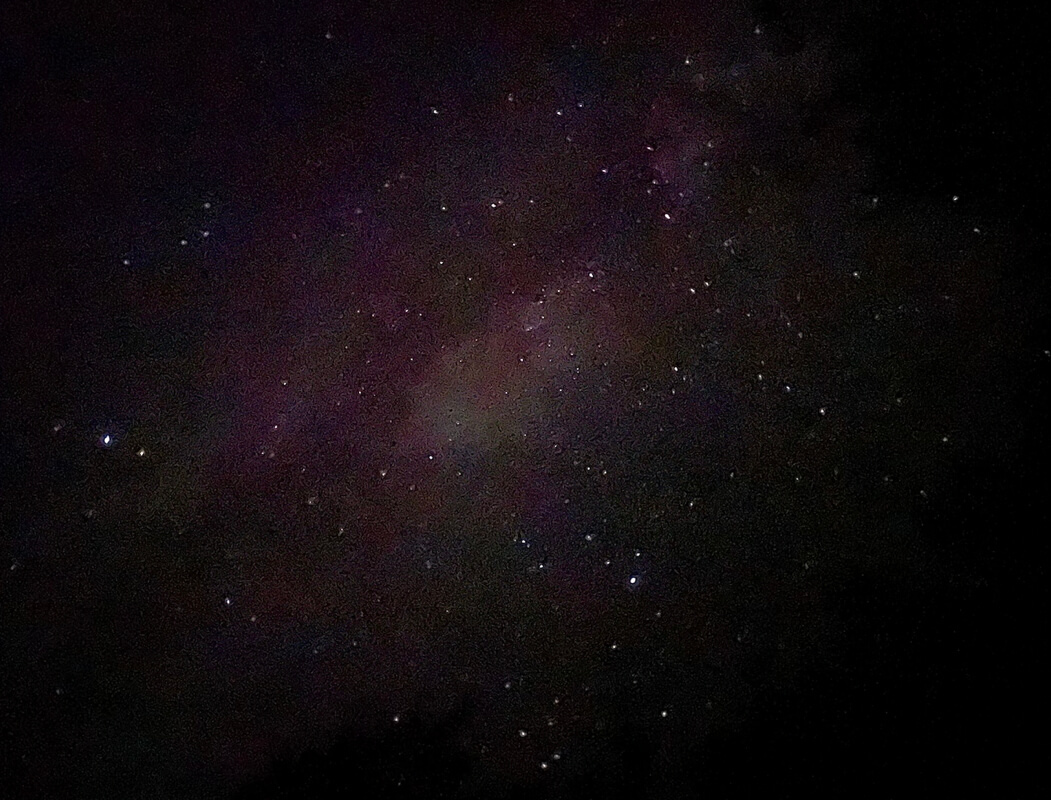
We were to write down a description of the weathered and non-weathered appearance of the rock, which means what the external face of the rock looks like after it has been broken down due to physical (wind, water, heat) or chemical agents and the internal appearance that has been untouched by those forces.
In addition, we were to record the rocks’ color and any minerals that we could identify, along with the texture of the rock. The options for the texture of the rock were coarse-grained, meaning the minerals and grains within the rock are large, fine-grained, meaning that the minerals and grains are small, or porphyritic, a mixture of coarse and fine-grained.
The size of the grains within the rock depends on how quickly the magma that forms the rock cools. The bigger the grain, the slower the cooling of the magma. Porphyritic rocks are generally cooled at two different speeds — some of the minerals cool more slowly while still underneath the Earth’s crust, but when the magma erupts to the Earth’s surface, the rest of the magma solidifies rapidly, forming fine-grained minerals and a varied texture across the rock.
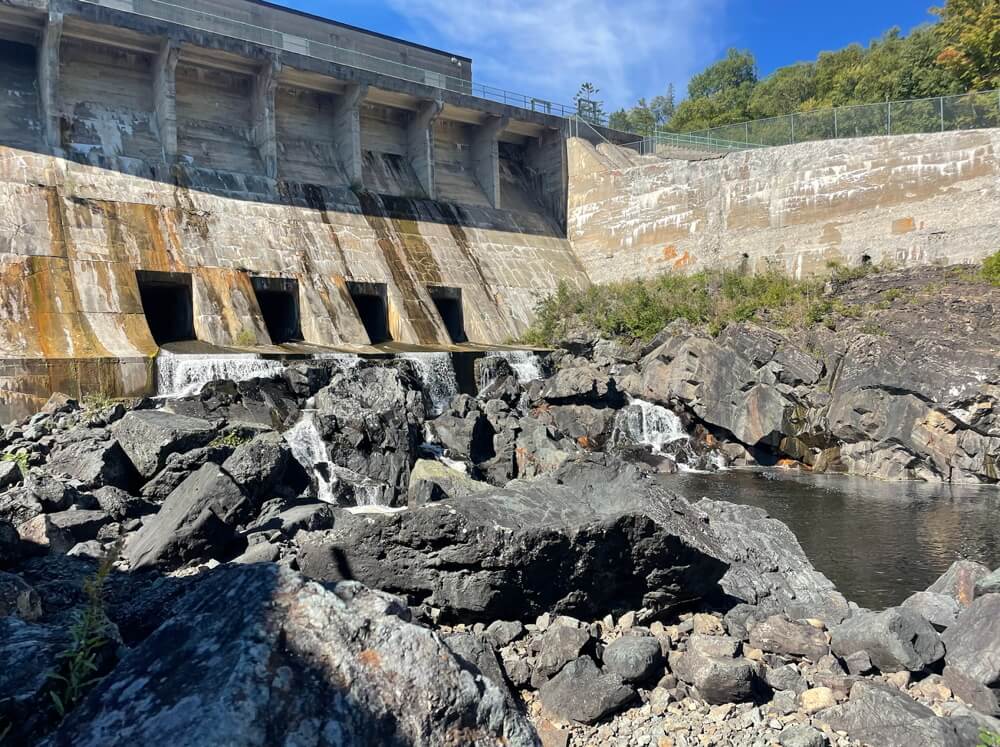
Everyone paired up and then set off, eager to tackle the task at hand. My partner and I started hammering away at an outcrop on the southern edge of the Gorge. After we hacked away a substantial chunk of the outcrop, we began to note down our observations. The rock was dark gray in color and fine-grained. Using our hand lens, we spotted some pyroxene, biotite, and hornblende minerals. Excited to see things that we recognized, my partner and I were feeling pretty confident about rock identification. After concluding that it was probably basalt, we moved on, labeling our sample and its coordinates on the map.
We found another outcrop to examine, and the sample we collected looked pretty similar to the previous one. However, its weathered appearance was slightly different, with lichen covering the surface of much of the rock. After breaking into the rock, we discovered that it contained pyroxene, biotite, and hornblende, along with a bit of quartz, therefore it was also probably basalt.
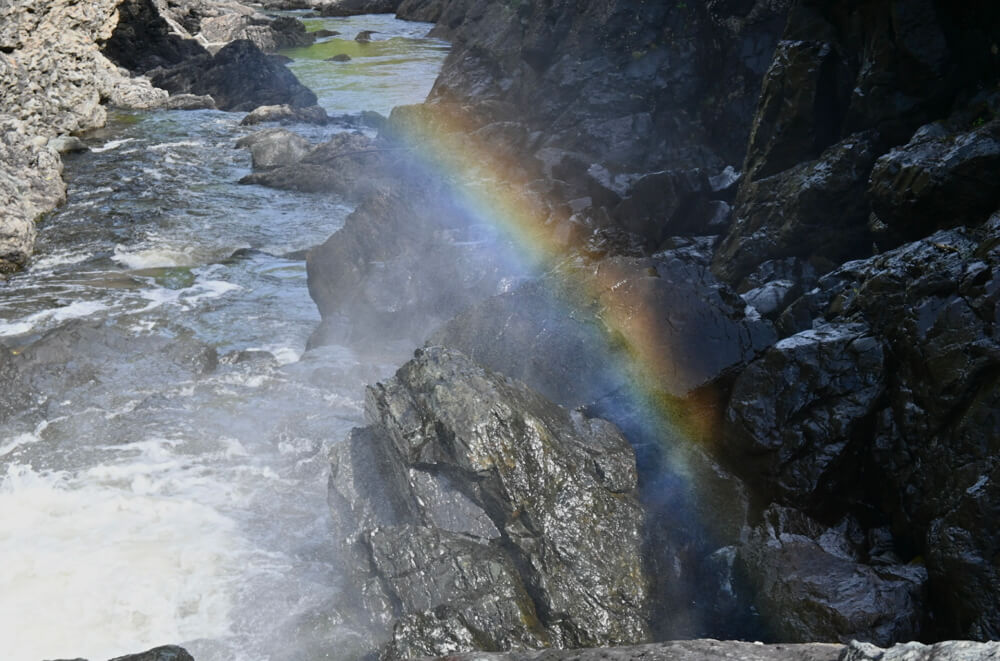
The pattern continued for the rest of the morning, and my partner and I scaled boulders and bedrock outcrops in hopes of finding another type of rock. Alas, we had no luck. We could tell that the other groups were also starting to get fed up, trying to see if anyone else had found anything more exciting. The three hours had passed, and everyone returned to the vans grouchier than before they’d started. One of the students asked the professor, “Andrew, were we supposed to find anything other than basalt? Are we missing something?” Andrew grinned, not giving us an answer, only saying, “Let’s see if we find anything else after lunch.”
After eating our packed lunches, the class begrudgingly returned to the gorge. After a few more basalt samples, one of our classmates excitedly shouted across the gorge, “I found something! Something that’s not basalt!” Everyone instantly scrambled over the rocks to see something other than the igneous rock that had become the victim of some increasingly aggressive rock hammering.
Our professor came over to inspect the exciting new find and asked anyone if they could identify it. Everyone shifted uncomfortably, not wanting to speak up. Eventually, someone chimed in, reporting what they could observe; “This rock is much lighter in color than the basalt, and it seems to have a concentration of calcite.”
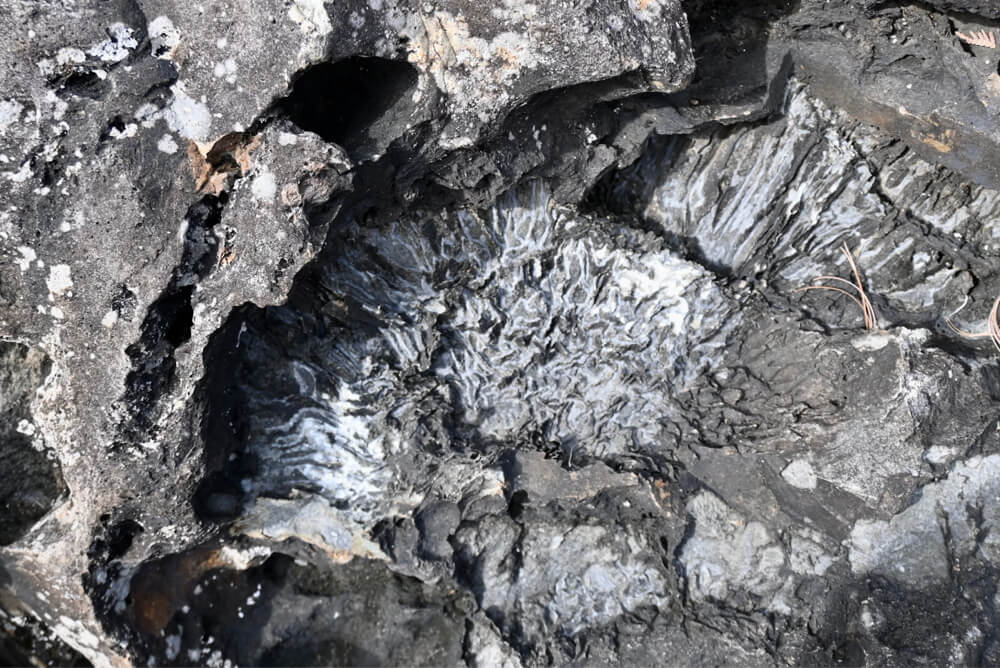
Andrew filled in the rest of the information, identifying the rock as calcareous sandstone. As we had learned in class when discussing the different types of rocks, sandstone is a sedimentary rock primarily made up of sand grains that have been compacted and cemented together along with quartz and feldspar. Our professor explained that this rock was the result of weathering of calcareous (containing calcium carbonate) material within the sandstone. This material erodes at a much faster rate than the rest of the sandstone, creating these pits that the class had discovered.
After inspecting the sandstone, a member of the class yet again asked if there was anything else to be found. Andrew shrugged and said that it was unlikely that they would find any other type of bedrock besides the basalt we had become all too familiar with. The class groaned while Andrew grinned. One of my classmates shook his fist at the sky, yelling, “IT WAS ALL BASALT!”
And it was true! My class spent a total of four hours traversing this gorge, finding very little other than a large amount of basalt. I will always remember the frustration of hitting outcrop after outcrop, hoping for something new, and repeatedly being let down. However, after the debrief of the trip, I learned that it wasn’t so shocking to find so much basalt, due to the fact that the bedrock of the Gorge was formed from Ordovician Dry Way volcanics. These volcanics were likely formed from convergent plate activity, including subduction and other volcanic activity, and led to the creation of basaltic bedrock across a large area in the region that is now referred to as Maine.
Basalt is our planet’s most abundant bedrock, covering more of Earth’s surface than any other rock. Basalt is created by the cooling of magma and can appear across a large area like in the gorge, or as an intrusive dike, which is a volcanic rock that cuts through another type of existing rock. Basalt is also often found at divergent tectonic boundaries in the ocean, called mid-ocean ridges, in addition to volcanoes. In fact, almost all of Hawai’i is composed of basaltic lavas from the Hawai’ian volcanoes! Basalt is an extrusive igneous rock, meaning it cooled above the Earth’s surface. It was formed from low-viscosity magma that is both iron and magnesium-rich, meaning it is classified as a mafic rock.
Though the four hours of hammering were certainly tedious, I will never forget how to identify the dark, fine-grained, igneous rock that is so important to our Earth’s makeup. Though we didn’t find many different samples, my class learned valuable field skills on that first trip- how to properly write field notes, what properties are diagnostic of a rock type, and how to persevere through frustrating results.
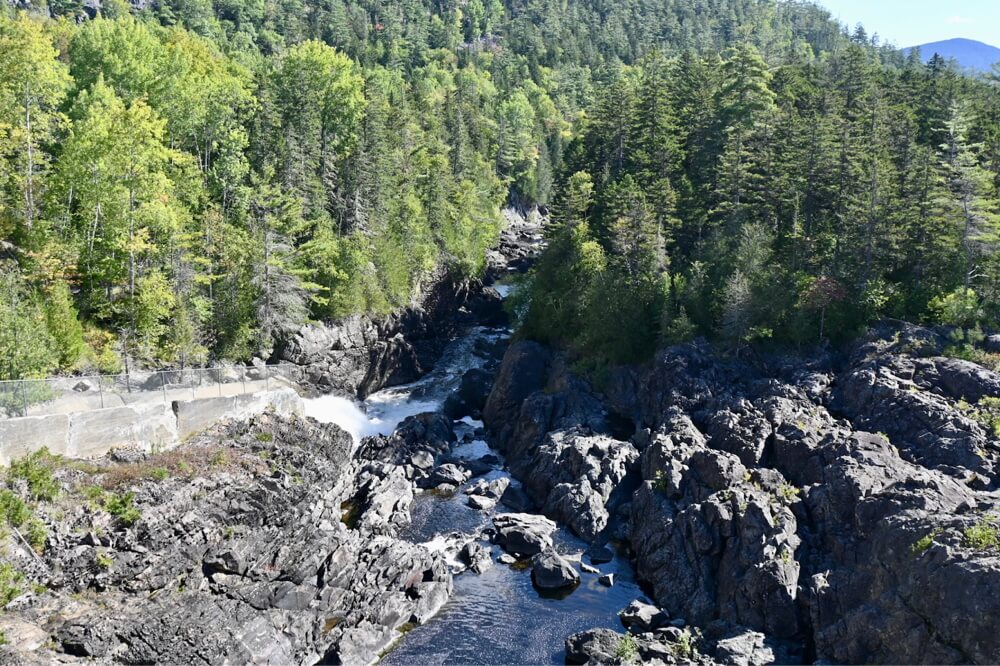
For more information on the geologic history of Maine, see
Hillenbrand, Ian. “Maine Geologic Facts and Localities – Digitalmaine.” Ocean Crust, Fossils, and an Unconformity: Bedrock Geology of Ripogenus Dam, June 2018, digitalmaine.com/cgi/viewcontent.cgi?article=1540&context=mgs_publications.
